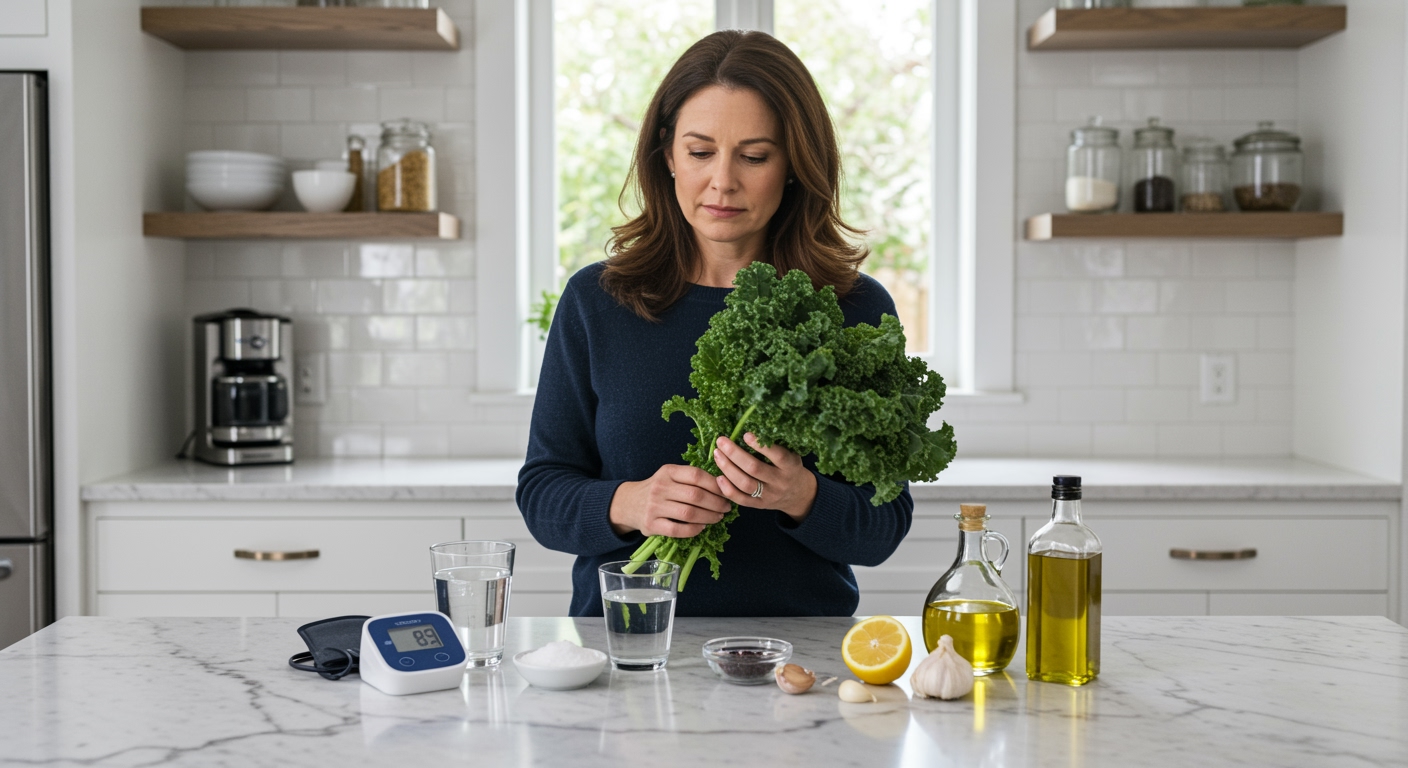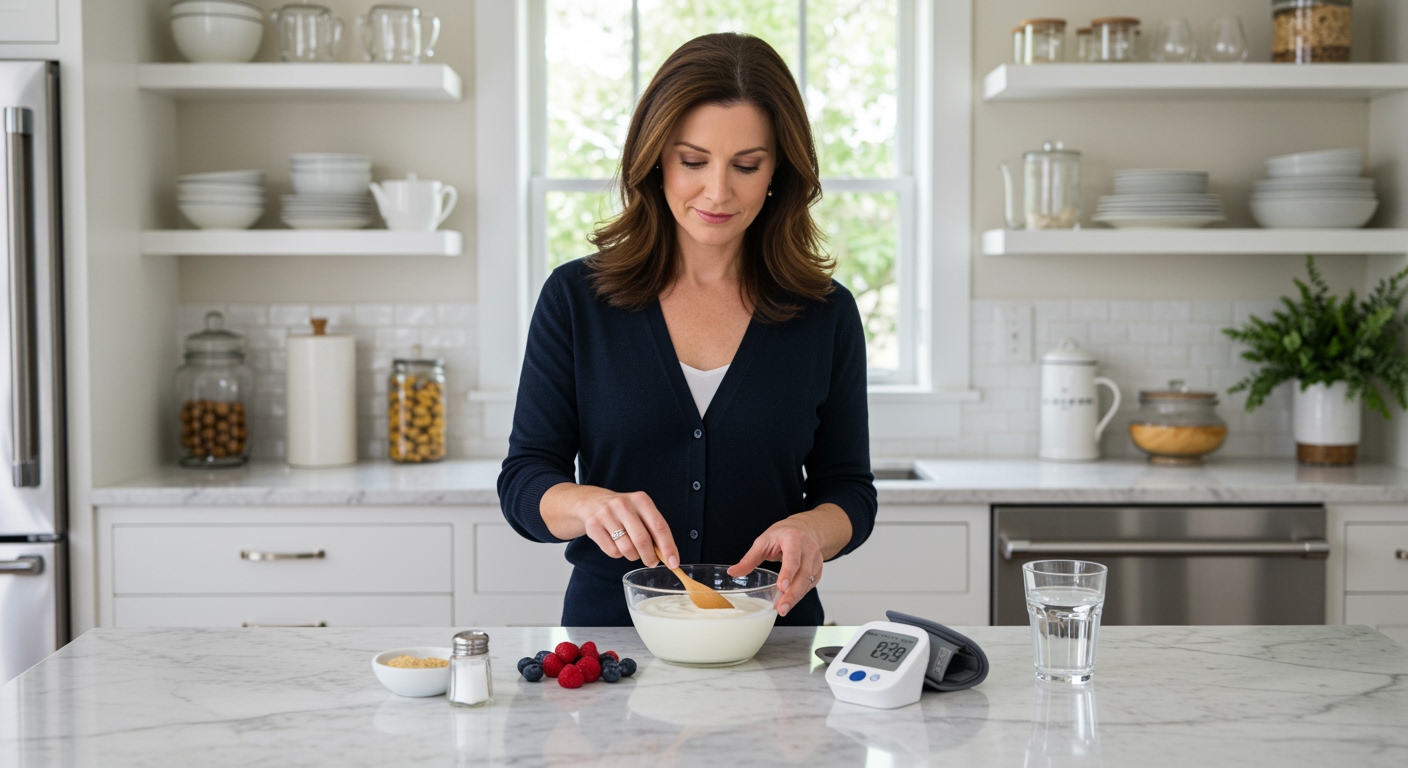✪ Key Takeaway: Kale can potentially worsen low blood pressure symptoms due to its high potassium content and natural diuretic properties.
Introduction
Your doctor told you to eat more vegetables, but now you wonder if that kale salad might be making you feel dizzy.
People with low blood pressure often struggle to find the right balance between eating healthy foods and managing their symptoms.
Hi, I’m Abdur, your nutrition coach and today I’m going to explain how kale affects low blood pressure and what you need to know before adding it to your meals.
How Does Kale Affect Blood Pressure Levels?
Kale contains an impressive 491 milligrams of potassium per 100 grams of raw leaves.
This mineral acts as a natural vasodilator in your body, which means it helps blood vessels relax and widen.
When your blood vessels dilate, your blood pressure naturally drops because your heart does not need to work as hard to pump blood through wider pathways.
For people with normal or high blood pressure, this effect is beneficial and helps reduce cardiovascular risk.
However, if you already have low blood pressure (hypotension), this additional drop can push your levels even lower.
The diuretic compounds in kale also increase urine production, which reduces blood volume and can further decrease blood pressure.
✪ Fact: One cup of chopped kale provides about 10% of your daily potassium needs.
What Symptoms Should You Watch For?
Low blood pressure symptoms can become more pronounced when you consume large amounts of potassium-rich foods like kale.
The most common symptom is dizziness, especially when you stand up quickly from sitting or lying down.
This happens because your blood pressure drops too low to maintain adequate blood flow to your brain during position changes.
You might also experience fatigue and weakness throughout the day, as your organs receive less oxygen-rich blood than they need.
Some people report feeling lightheaded or experiencing brief moments of confusion after eating large kale salads.
Nausea can occur when blood pressure drops significantly, as your digestive system receives reduced blood flow.
If you notice these symptoms consistently after eating kale, it might be affecting your blood pressure levels.
✪ Pro Tip: Keep a food and symptom diary to track how different amounts of kale affect your daily energy levels.
Can You Still Eat Kale With Low Blood Pressure?
You do not need to completely eliminate kale from your diet if you have low blood pressure.
The key is portion control and timing your consumption strategically throughout the day.
Start with small amounts, such as half a cup of chopped kale mixed with other vegetables in a salad.
Cooking kale can reduce its potassium content slightly, as some minerals leach into the cooking water.
Try sautéing kale with a pinch of sea salt, which can help counteract some of the blood pressure-lowering effects.
Eating kale with protein-rich foods like eggs or chicken can help slow down the absorption of potassium and minimize sudden blood pressure changes.
Avoid eating large amounts of kale on an empty stomach, as this can intensify its effects on your blood pressure.
✪ Note: Massaging raw kale with olive oil and salt can make it easier to digest and may reduce its potassium impact.
What Are Better Vegetable Options For Low Blood Pressure?
Several vegetables provide excellent nutrition without the high potassium content that might worsen low blood pressure symptoms.
Spinach contains less potassium than kale while still offering iron, folate, and other essential nutrients.
Lettuce varieties like romaine and iceberg have minimal potassium content and provide good hydration and fiber.
Carrots offer beta-carotene and natural sweetness without significantly affecting blood pressure levels.
Bell peppers provide vitamin C and antioxidants with moderate potassium levels that most people with low blood pressure can tolerate.
Cucumbers are particularly good choices because they contain natural sodium, which can help maintain blood pressure.
Green beans and snap peas offer protein and fiber while being gentler on blood pressure than leafy greens.
✪ Pro Tip: Celery naturally contains sodium and can actually help support healthy blood pressure levels in people with hypotension.
The Bottom Line
Kale can indeed worsen low blood pressure symptoms due to its high potassium content and natural diuretic properties, but complete avoidance is not necessary.
Smart nutrition means understanding how foods affect your individual health condition, not following blanket rules that ignore your unique needs.
I would love to hear about your experiences with kale and low blood pressure in the comments below, and feel free to share any questions about managing your diet with hypotension.
References
At NutritionCrown, we use quality and credible sources to ensure our content is accurate and trustworthy. Below are the sources referenced in creating this article:
- Medical News Today: 4 daily servings cruciferous vegetables broccoli kale may help lower blood pressure
- Avicenna Cardiology: Vegetables for Low Blood Pressure The Ultimate Guide
- British Heart Foundation: Cruciferous Vegetables
- Diet vs Disease: 11 Proven Food to Lower Blood Pressure





